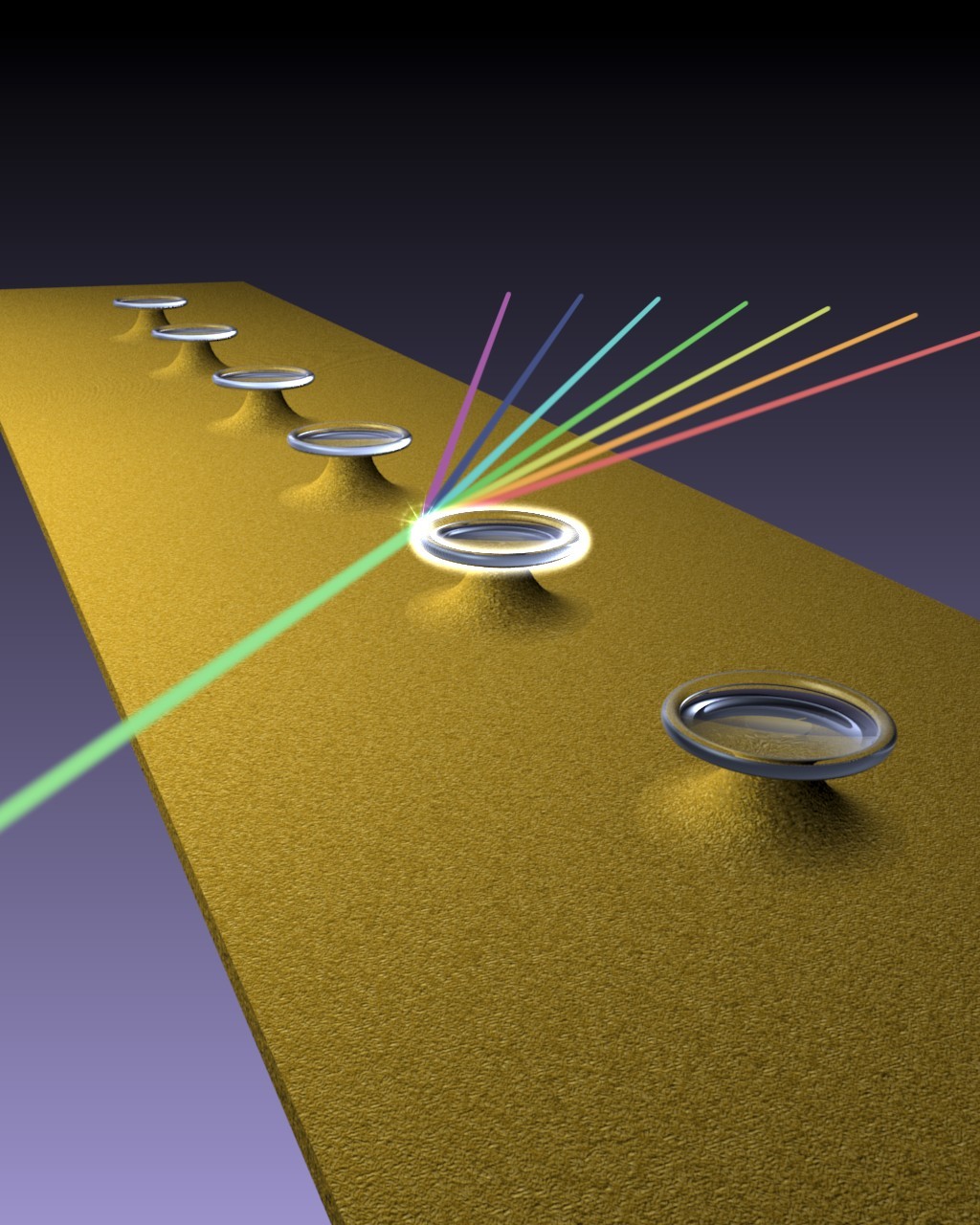July 20, 2022
Two institutes from the Fraunhofer-Gesellschaft and one from the Max-Planck-Gesellschaft launched the joint project “LAR3S” on March 1, 2022. In this project, they are taking a completely new approach to producing three-dimensional photonic components with lasers, focusing on selective laser-induced etching and inverse laser drilling. A key goal is to achieve processes and procedures that can be automated to a large extent.
New ideas for the industrial production of microstructures
Glass is a fascinating material: Not only is it transparent, but the inner volume of the material can also be processed. To process the inside of glass, laser radiation is used to penetrate the material, making it possible to process a wide variety of transparent materials with extensive geometrical freedom in all three dimensions. The challenge, however, is in the details: In order to achieve crack- and fracture-free results, research first needs to understand the material properties and machining processes in detail.
In the project “LAR3S – Laser-generated three-dimensional photonic components,” the partners want to use their special know-how to jointly expand process knowledge and develop new technologies for manufacturing various 3D structures with lasers. The Max Planck Institute for the Science of Light (MPL), the Fraunhofer Institute for Laser Technology ILT and the Fraunhofer Institute for Silicate Research ISC are involved.

Selective laser-induced etching can be used to manufacture microresona-tors, for example for frequency comb generators. The laser process enables new geometrical shapes.
© Max Planck Institute for the Science of Light (MPL), Erlangen.
Laser drilling in glass fibers
Thirty years ago, the idea of producing glass fibers with holes along their entire length was laughed at incredulously. A team led by Philip Russell, now director emeritus of the MPL, developed a technology to do just this – in which glass rods or tubes are stacked together and drawn to length. This is how glass fibers with specific cross-sections can be drawn today, also known as the stack-and-draw process. Structured hollow-core fibers can be used, among other things, to transmit very intense laser beams that would destroy solid fibers.
The construction of structured fibers is usually limited to a hexagonal shape when the stack-and-draw method is used. Engineers at Fraunhofer ILT are continuing to develop a patented process – inverse laser beam drilling – with which more complex and thus potentially more advantageous structures can be manufactured completely automatically. In this process, the laser beam is focused through a transparent component onto the rear side and moved over the surface to be ablated with a scanner. In a sense, the laser drills a hole backwards into the glass. Thanks to this, almost any structures with large aspect ratios can be introduced into the fiber blank, and other transparent materials also pose no problem. In the future, the structures will be calculated on the computer with artificial intelligence and directly manufactured with the laser.
Fraunhofer ISC brings a key competence in process control to the project: removing the ablated residual materials from the boreholes. For this purpose, Fraunhofer ISC and the project partners are optimizing the laser parameters and developing physical or chemical methods for process optimization. Their goal is to create structures with tailored dispersive properties in fiber preforms over 200 mm long.
3D microstructures by selective laser-induced etching
Another process that can enhance micromaterial applications is selective laser-induced etching. In this process, focused ultrashort-pulsed laser radiation is used to structure the volume and surfaces of a transparent material crack-free, thereby changing its chemical properties so that it can later be selectively etched. When the focus is deflected in the workpiece, contiguous areas are modified, which can be removed in the second process step by wet chemical etching. This two-part process also provides its users with a high degree of geometrical freedom.
The project partners want to optimize the process primarily for new geometrical shapes in the manufacture of laser microresonators. Such sub-millimeter structures can be used in telecommunications and quantum technology, for example. As couplers, converters or sensors, they enable the further miniaturization and integration of optical components.
The project “LAR3S – Laser-generated three-dimensional photonic components – Resonant and antiresonant devices for shaping and guiding light” is funded by the Fraunhofer Max Planck Cooperation Program. It will run for three years.












